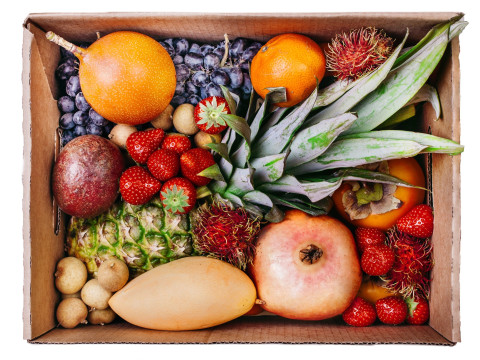Containers for water and KAS: How to choose the best option for farming.
Containers for storing water and KAS (urea-ammonia mixture) are an important part of the infrastructure of farms. They are used for irrigation, storage of liquid fertilizers and other agricultural needs. In this article, we will tell you how to choose a suitable container for water and KAS, taking into account all the features and needs of the farm.
1. Purpose of water containers and KAS Water containers and KAS perform different functions:
Water containers : Used to store water for irrigation, drinking animals and other purposes. It is important to choose the right volume of the container based on the amount of water needed for your farm. help increase yield. KAS is a water-soluble mixture of urea and ammonia, which requires special storage conditions.
2. Types of containers for water and KAS There are several types of containers that differ in materials and purpose:
Plastic containers: Light, resistant to corrosion and durable They are suitable for storing water and liquid fertilizers. Plastic containers come in different sizes - from small to large ones containing several tons of liquid.
Metal containers : Strong and durable, but prone to corrosion They are suitable for water storage, but require special anti-corrosion coatings for KAS storage.
Composite containers : Made of modern composite materials that combine strength metal and resistance to chemicals. They are ideal for the storage of KAS because they are not susceptible to corrosion and the chemical effects of fertilizers.
Compact containers : These are mobile tanks that can be quickly deployed and use for temporary storage of water or fertilizers. Such containers are convenient for seasonal use.
3. How to choose the volume of the container? The choice of the volume of the container depends on several factors:
Size of the farm: For small farms, containers with a volume of 1000 to 5000 are suitable liters Larger farms may require tanks over 10,000 litres.
Water and Fertilizer Requirements : Determine how much water or KAS you need per one irrigation or fertilizer cycle. This will help you calculate the volume of the container you need.
Frequency of filling : If you have constant access to water and fertilizer, you can use smaller containers. In case of infrequent deliveries or the need to store large volumes of liquid, choose larger tanks.
4. Operating conditions The correct selection of the container also depends on the operating conditions:
Climatic conditions: For outdoor operation, choose containers that are resistant to temperature changes and exposure to ultraviolet rays. Plastic containers are usually more resistant to climatic influences than metal ones.
Installation location : Containers should be installed on a flat surface to avoid damage and leaks. Make sure that the chosen location is suitable for the installation of a large container and its subsequent maintenance.
Transportation : If you plan to move the container often, pay attention to mobile models . They are lighter and easier to transport.
5. Care and maintenance To extend the service life of the container, it is necessary to carry out regular maintenance:
Cleaning: Regular cleaning of the container from water and fertilizer residues prevents the appearance of plaque and impurities that can reduce the quality of water or fertilizers.
Integrity check : Check the integrity of the container, especially if it is installed outdoors. Plastic and composite containers are less prone to damage than metal, but they should also be inspected periodically.
Corrosion protection : If you use metal containers for storage of KAS, make sure that the inner coating of the container is protected from the effects of chemicals.
6. Safety when using KAS KAS is a chemical fertilizer, and its storage requires compliance with safety measures:
Protection from children and animals : Place containers in out of the reach of children and animals, as KAS can be dangerous on contact.
Airtightness : Make sure the container is airtight to avoid leaks that could cause damage to the soil and plants.
Correct labeling : All containers for the storage of KAS should be properly labeled to avoid accidental misuse of the liquid.< /p>
Conclusion The correct choice of a container for water and KAS is the key to successful management. Consider the volume, material and operating conditions of the container, as well as regular maintenance and safety precautions when using chemical fertilizers. With the help of high-quality and correctly selected containers, you will be able to optimize irrigation and fertilizer processes on your site.






















